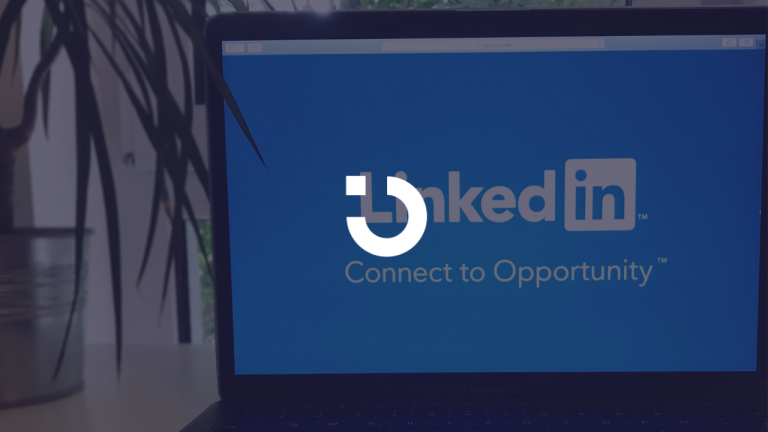Cold emailing isn’t dead, but it is evolving rapidly. In 2025, Gmail’s spam filters are more aggressive than ever, blocking over 99.9% of spam and reducing scam emails by 35% . These changes are reshaping how B2B sales teams approach cold outreach (source: Instantly).
In this post, we’ll explore how Google’s new spam policies are impacting cold email deliverability and what B2B marketers can do to adapt.
What’s Changing in 2025?
Google’s spam filters now employ more sophisticated AI algorithms, focusing on user engagement and content quality rather than just sender reputation. This means that even well-crafted cold emails can end up in the spam folder if they don’t meet these new criteria .
Why It Matters for B2B Cold Email
With stricter spam filters, the margin for error in cold email campaigns has become razor-thin. Marketers must now prioritize personalization, relevance, and compliance to ensure their messages reach the intended recipients.
In the following sections, we’ll delve into the specific changes affecting cold email in 2025 and provide actionable strategies to navigate this new landscape.
What’s Changing: A Breakdown of Google’s Spam Updates
Google’s 2025 spam filter updates have significantly altered the landscape for B2B cold emailing. Here’s how:
1. Stricter Spam Filters
Google’s spam filters are now more sophisticated, using AI to evaluate engagement and content quality, not just sender reputation. Emails that look generic, irrelevant, or poorly targeted are much more likely to land in spam, even if they follow traditional best practices.
Source: SalesForge.ai
2. Lower Spam Complaint Thresholds
Previously, Gmail tolerated spam complaint rates around 0.3%. Now, the recommended threshold is below 0.1%. Even a few complaints can impact your deliverability.
Source: 1827Marketing
3. Increased Authentication Requirements
Google is enforcing stricter authentication rules for all senders:
- Domains without proper authentication risk being blocked or flagged as spam.
- SPF, DKIM, and DMARC records must be correctly set up.
Source: 1827Marketing, The Times
4. Impact on AI-Generated Content
AI-generated content is under the microscope. Emails that are overly generic or obviously automated are more likely to be flagged as spam. Personalization and relevance have never been more important.
Source: Reddit Cold Email Community
5. Reduced Email Volume Tolerance
Even verified domains face stricter volume limits. Cold email campaigns now require longer warm-up periods and slower sending ramps to avoid spam filters.
Source: Reddit Cold Email Community
These changes necessitate a more strategic and compliant approach to cold emailing. In the next section, we’ll discuss actionable strategies to adapt to these new challenges and maintain effective B2B cold email campaigns.
Why B2B Cold Email Needs a New Playbook
The Gmail updates in 2025 aren’t just tweaks. They fundamentally change how cold email works for B2B marketers. Here’s why you need a fresh approach:
1. Less Margin for Error in Deliverability
Gmail’s heightened standards mean that even small mistakes – like sending to outdated contacts, neglecting authentication, or crafting low-quality copy – can land your emails straight in spam. You can no longer rely on bulk sending or generic templates to reach inboxes.
2. AI-Driven Spam Filters Focus on Engagement
Spam detection isn’t just about volume anymore. Gmail now uses advanced AI to evaluate engagement and trust signals, such as reply rates, open rates, and interaction history. High-volume campaigns with low engagement are more likely to be flagged, while smaller, highly relevant campaigns gain inbox access.
- Source: Mailivery.io
- Source: Braze
3. Deliverability Is About Relevance and Quality, Not Just Tech
Technical fixes like SPF, DKIM, and DMARC are necessary, but not sufficient. Gmail now rewards relevant, personalized, and high-quality outreach. That means your copy, subject lines, and timing must resonate with your target audience, or your emails won’t reach them at all.
In 2025, cold email success depends on more than just sending lots of emails. You need a strategic, quality-first outbound playbook that combines technical compliance with highly targeted, engaging content.
Key Impacts on B2B Outbound Strategy
Google’s 2025 spam updates are reshaping how B2B teams approach cold email. Here’s what you need to know to stay effective:
1. Stronger Authentication Is Non-Negotiable
SPF, DKIM, and DMARC aren’t optional anymore. Sending from unauthenticated domains can lead to immediate filtering, even for well-targeted campaigns. Make sure your technical setup is airtight to maintain deliverability.
2. Personalization and Relevance Are Critical
AI-driven filters now prioritize engagement over volume. Generic blasts are far more likely to get flagged. Personalizing emails by role, industry, pain points, and recent activity increases the chances of reaching the inbox and sparking a response.
3. Multi-Channel Outreach Becomes More Important
With Gmail cracking down on cold email, relying solely on email can be risky. Combining email with LinkedIn, calls, or other channels improves engagement rates and reduces the risk of campaigns being blocked.
4. Monitoring Engagement Metrics Is Key
Your campaign success is now measured by positive replies, clicks, and conversions, not just sends or opens. Tracking engagement helps you detect issues early and adjust your strategy before it impacts deliverability.
5. Reduced Volume Tolerance Means Smarter Scaling
You can’t just send more emails to hit targets. Slow ramp-ups, domain warm-ups, and careful volume management are essential to avoid spam filters and maintain a good sender reputation.
The new Gmail rules force B2B teams to focus on quality, compliance, and engagement rather than brute-force outreach. Cold email still works, but only if you adapt your strategy.
Actionable Response: Adapting to Google’s Rules
The 2025 Gmail updates are challenging, but they also give B2B teams a chance to outperform competitors who aren’t paying attention. Here’s how to adapt your outbound strategy:
A. Technical Foundations
- Authenticate your emails with SPF, DKIM, and DMARC.
- Monitor domain reputation using Google Postmaster Tools to catch issues early.
- Warm up new domains slowly, gradually increasing send volume to build trust.
B. Content Strategy
- Personalize every message, include the prospect’s role, company, pain points, or recent news.
- Use concise, relevant subject lines to encourage opens.
- Avoid spammy words or phrases that trigger Gmail’s AI filters.
- Keep spam complaint rates below 0.1% to maintain inbox placement.
C. Subscription & Compliance
- Include a one-click unsubscribe link and honor opt-outs immediately.
- Ensure all headers, footers, and unsubscribe mechanisms comply with Gmail’s bulk sender guidelines.
D. Deliverability & Engagement Monitoring
- Track key metrics: positive replies, click-throughs, conversions, and domain health.
- Adjust campaigns in real time based on engagement signals, Gmail favors senders whose emails drive interaction.
Bottom Line:
Adapting to Gmail’s new rules isn’t just about compliance — it’s about building trust, relevance, and engagement. The teams that get it right will maintain inbox access, improve response rates, and stay ahead of competitors who ignore these updates.
Google’s 2025 spam updates have raised the bar for B2B cold email. Deliverability is no longer just about technical compliance, it’s about engagement, personalization, and relevance. Teams that adapt quickly will not only maintain inbox access but also outperform competitors relying on outdated tactics.
The key takeaways:
- Ensure your technical foundations are solid (SPF, DKIM, DMARC).
- Prioritize high-quality, personalized messaging over generic blasts.
- Monitor engagement metrics to optimize campaigns in real time.
- Plan for multi-channel outreach to diversify touchpoints and reduce risk.
Take Action
Ready to futureproof your outbound campaigns and maximize cold email performance? Contact Outbound Republic today to build a strategy that keeps your messages in the inbox and drives real B2B results.




